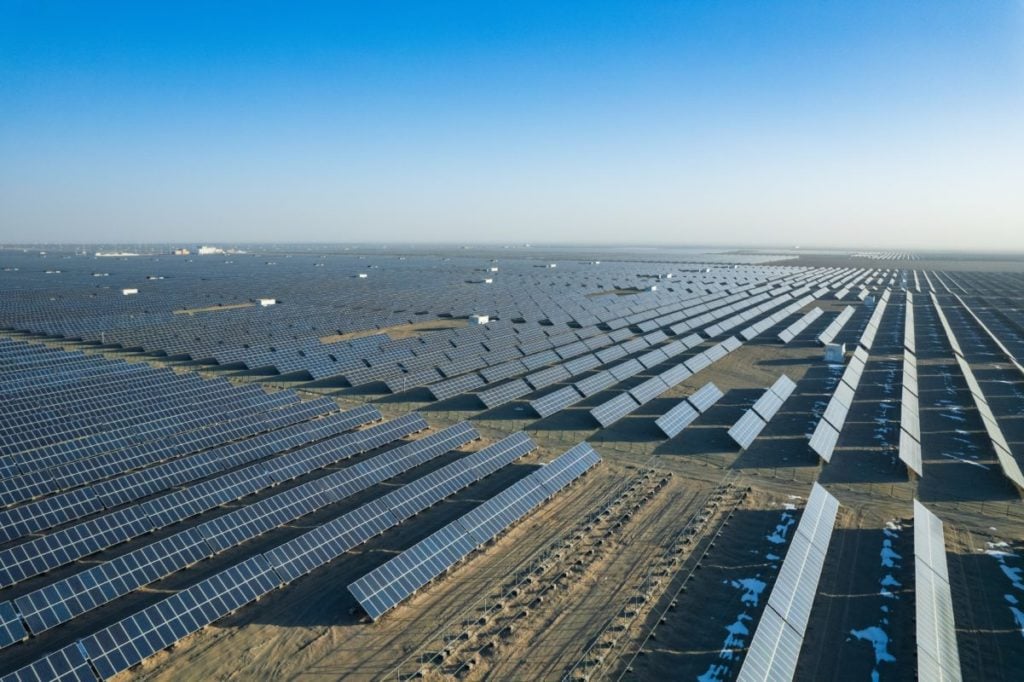
Approvals granted earlier this month for utility plans to replace coal in Kentucky with solar PV and battery storage have been broadly welcomed, though advocacy groups have said that ongoing state support for coal and natural gas plants is an issue.
The Kentucky Public Services Commission (KPSC) granted approvals to Louisville Gas and Electric Company (LG&E) and Kentucky Utilities Company (KU) earlier this month for plans to replace 600MW of coal generation at the Mill Creek plants with 877MW of solar PV and energy storage.
Unlock unlimited access for 12 whole months of distinctive global analysis
Photovoltaics International is now included.
- Regular insight and analysis of the industry’s biggest developments
- In-depth interviews with the industry’s leading figures
- Unlimited digital access to the PV Tech Power journal catalogue
- Unlimited digital access to the Photovoltaics International journal catalogue
- Access to more than 1,000 technical papers
- Discounts on Solar Media’s portfolio of events, in-person and virtual
240MW of PV owned by the utilities will be built in lieu of the coal capacity, with a further 650MW to be acquired through power purchase agreements (PPA). A 125MW utility-scale battery energy storage system – the ‘largest’ in Kentucky – was also approved.
“This Order is a major victory for clean energy in Kentucky,” said Andy McDonald of the Kentucky Solar Energy Society. “LG&E-KU proposed the largest-ever buildout of solar in Kentucky and the Commission approved their entire proposal because it will improve reliability and lower costs for customers.”
The KPSC approved the solar and storage plans on the basis of the “significant savings” they would offer to customers, according to a press statement from climate law firm Earthjustice. Batteries in particular are poised to play an increasingly crucial role for US utilities as they transition away from fossil fuel generation and embrace more distributed – and intermittent – renewables.
In the same ruling, the commission also denied the construction of one new natural gas plant, but approved a second. It approved the retirement of two coal plants and three gas plants, but deferred the retirement of another pair of coal plants.
This ruling was the first enactment of Kentucky Senate bill 4, which passed earlier this year. It requires utilities to seek approval from the KPSC before retiring any fossil fuel generation and effectively makes the process more difficult.
“LG&E-KU had wanted to retire four coal plants because they are too costly to operate and require massive investments to bring them into compliance with air and water quality regulations,” said Josh Bills of the Mountain Association, a nonprofit community development financial institution in Kentucky.
A similar story has holds true elsewhere in the US; to the west, in Arizona, state utilities are all seeking solar and storage capacity expansions to account for retiring coal generation over the second half of this decade. Fossil fuel plants are increasingly financially inefficient, and the price of renewables is decreasing alongside more mandated renewables share targets. A detailed view of Arizona utilities’ integrated resource plans can be found in this piece on PV Tech Premium.
Bills continued: “Although the Commission decided to keep two of these old coal plants open for the time being, they established a pathway for how such plants can be retired in the future. Importantly, they noted that the success of customer efficiency programs and the growth of distributed energy resources (like rooftop solar) could reduce demand enough to allow these coal plants to be retired without costly new replacement fossil fuel generation in the years to come.”
“The denial of a US$650 million, 40 year commitment to a risky natural gas plant is a major victory for ratepayers,” said Catherine Clement of Kentuckians for the Commonwealth. “And the closure of those old Mill Creek coal units will mean better air quality for the people of Louisville and the surrounding region.”
The Inflation Reduction Act (IRA) has been slated to open up greater opportunities for replacing old coal plants or mines with solar PV capacity. Amongst its US$369 billion of renewable energy tax incentives, the IRA contains a specific 10% tax break for solar, storage and other renewables developments in traditionally coal-producing communities.
For example, in July 2023, independent power producer BrightNight revealed plans to build 800MW of solar PV on the site of a decommissioned coal mine, the Starfire mine, in Kentucky.
However, Earthjustice made sure to express its disappointment at the newly-granted gas approval and the deferred retirements of two coal plants. It said that the utilities must take the responsibility upon themselves to handle their operations in such a way as to make it unattractive for new fossil fuels capacity to be added or approved. It said in its press release that “LGE-KU must not ignore this opportunity to ramp up efficiency programs, solar energy, and battery storage to make any additional gas plants unnecessary.”







